ART TO GRIEVE
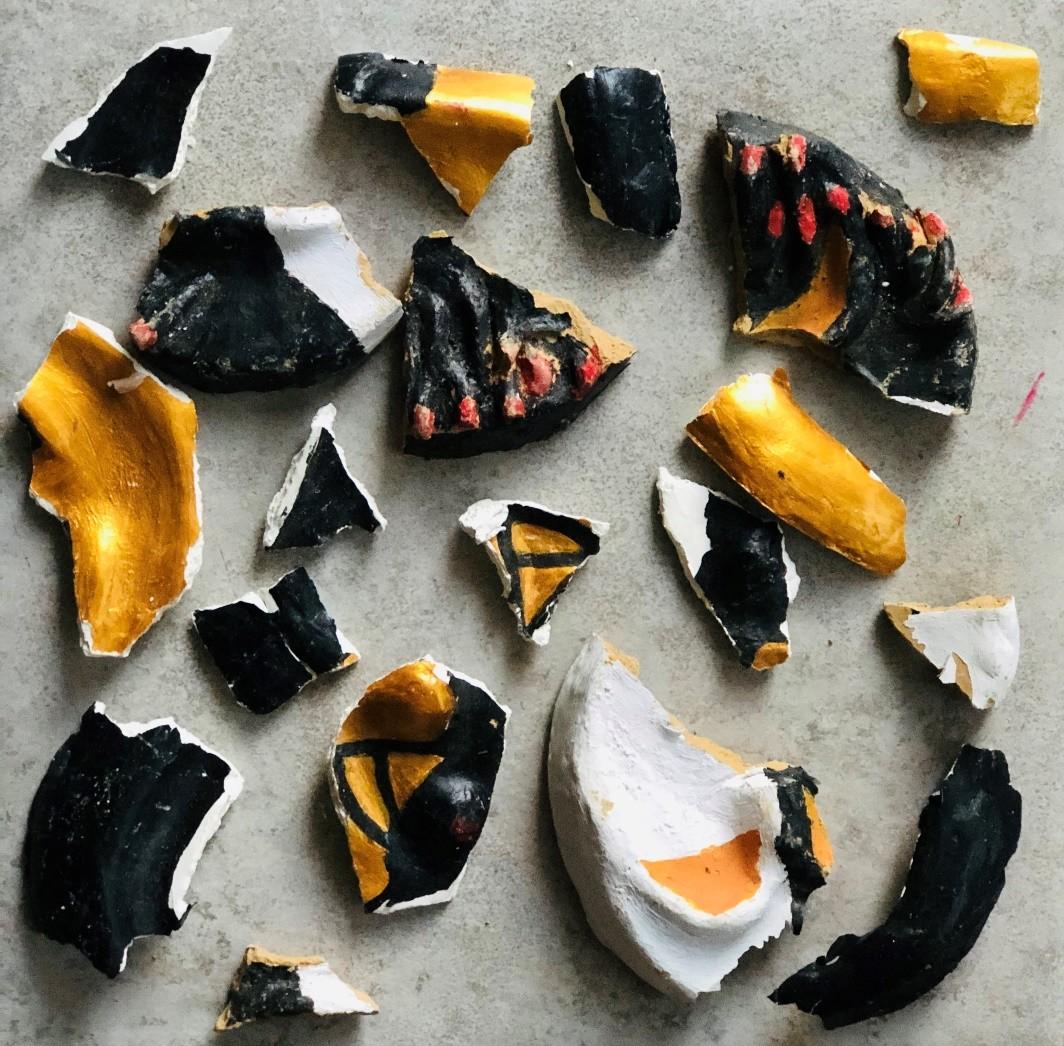

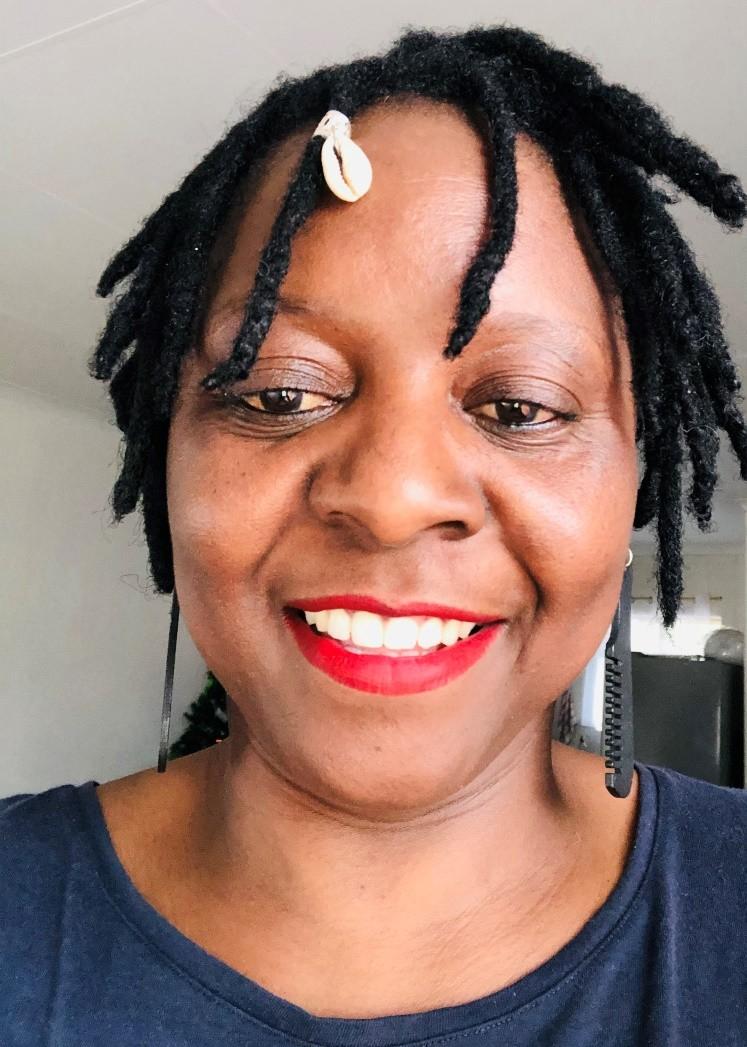
contents 3. Artist Statement 4. Introduction 5. Research 6. Inspirational Artists 7. Process 10. Conclusion 11. List of illustrations 31. Acknowledgements 33 . List of Sources 34. CV
ARTIST’ STATEMENT
• My theme is about using art to grieve, were I want to question the notion of art being an emotional outlet for grieving.
• The death of my parents and two siblings which occurred in a period of four years within a year apart from each other, and not giving me the chance to grieve properly for each one of them, has inspired me to look at the role of art processes in healing the pain of loss and grief.
• My body of work is in form of an installation comprising of a textile sculpture piece sculptured in textiles and stiffened with epoxy, clay masks that will echo the notion of internal scars or emotions hidden behind the masks. Masks being a façade many wear to disguise their true emotions, a woven traditional grass mat and a projected recorded performance, showing a multiple repetition of clay sounds that were produced when kneading.
INTRODUCTION
• The purpose of the study is to explore the use of creative expression to tell my personal stories of connection to my deceased loved one. With the final art work serving as a reminder of the therapeutic process of connecting with my emotions, as well as a reminder of the positive aspects of my relationship with my deceased loved one.
RESEARCH
•
• Theories of grief
• Although there are several literal theories on grief such as the Sigmund Freud’s Model of Attachment, Kubler-Ross Grief Cycle and Bowlby’s Attachment Theory, all the theories understand grief to involve painful emotional adjustment which takes time and cannot be rushed, and that grief is a process with universal characteristics although each person’s grief experience is unique. According to Sigmund Freud’s theory, “the bereaved do not need to forget and leave the deceased behind, but can integrate them into their future lives by means of a continuing bond. I have linked Margaret Stroebe and Henk Schut bereavement theory to my body of works as I feel that it helps me to reflect on clarifying and refining of my ideas. Stroebe and Schut’s bereavement theory which is known as the Dual process model, does not put emphasis on controlling one’s emotions, and suggests that grief operates in two main ways of restoration- oriented and lossoriented in which people switch back and forth between them. In loss-oriented, one’s memory of a loved one are triggered by particular situations around them which in turn lead to sadness, whilst in restoration-oriented, stressors allow one to be distracted from grief through daily life activities.
History and techniques of weaving
•Weaving has been done through centuries, seen as central to women’s lives and a practice that informed women’s identities, and regarded as a woman’s art. It is a process that involves building the weft thread by thread, and weaving in and out between the warp threads, can be viewed in the same way as people’s daily actions weave through their values, back and forth to build the fabric of their day. The weaving creative process will become a ritual repetitive motion for me when moving my hands as I open up the warp for the weft to be inserted over and over. By allowing the mind to fall into repetitive motions as one weaves, it becomes a meditative and therapeutic exercise of opening one to the inner dialogue, directing actions and allowing for that possibility of healing by giving one a place to let go.
•From birth to death, textiles are seen as the literal fabric of people’s lives, as they are woven into our lives, because as individuals we are interconnected in so many ways, such as being part of relational support systems of friends, family, religious and communal systems.
Artists who inspire my work
• Motoi Yamamoto the Japanese artist with his installation Return to the Sea 2012 inspired me to work on my particular theme. He uses his works as meditation for his never ending healing following his sister’s death from brain cancer. His installations which are intricate and large scale are an exercise necessary for his healing process. Yamamoto also tends to use his installations to hypnotise the viewers and absorbs them in the repetitive ritual of his hand.
• I’m also inspired by the South Korean conceptual artist, Kimsooja who combines performance, film photo and sound in mostly her site specific installations. She uses fabrics both literally and metaphorically, and clay while focusing on the action of the performance of the art process.
• Christian Boltanski who uses objects such as photographs, pieces of clothing, bells and flowers to give voice to absent subjects so inspires my works. His work titled Chance.2011 speaks to me because the mechanics of the ‘Wheel of Fortune” produces smooth and gracious movements which when observed over time, become soothing and meditative.
• My chosen medium (Fabric sculpting) and techniques (weaving), is inspired by:
• 1.Mrinalini Mukherjee a sculptor who uses flexible fibre and textile medium, which includes unconventional materials for sculpting such as dyed hemp fibre, through a weaving technique, to create her monumental pieces that mimic the curves of the human body.
PROCESS
• I am drawn to the use of mainly clay as a medium, because clay is a tactile medium which is also fluid and allows shifting to take place, as one works with it. It does in a way echoes the notion of evolving emotions of grief which tend to take place with time. I also feel that clay will afford me the opportunity to the coping mechanism as it has that soothing and slippery feel to it. To use clay as a medium for my work is a metaphor which will echo the bible
A collage of images showing some of my processes.









Recording the Performance Textiles
• I intend to document my art processes “as a kind of archive of grieving” by recording it, from day to day as I work with clay while moulding the masks sculptures. This will include the recordings of zooming into the meditations of my hands while in different actions of rolling, moulding and putting the clay into forms of masks shapes. For a dramatic effect of my video, I will also try the multi-layer the effects of juxtaposing the moving different light sources and that of my moving hands as I mould the clay while making the masks.
• For my sculptural piece I therefore intend weaving some of my mother’s clothes and mine onto the main sculpture, with some of the clothes being made into a fabric rope which will be attached/tied to the dress sculpture and pulling from it will be a contemporary object representing myself) depicting a sense of connection between my mother and myself, and at the same time creating a tension of myself holding on to her memory not wanting to let go of her.
• I’ve chosen to use textiles as my medium for my sculptural piece because clothes have an individual’s history, meaning and presence of the body in them, since they have a tendency to retain the memory of the body that was in them by retaining certain shapes of the human. I therefore find clothes as having a personal connection with the deceased, which is what ties me to my deceased mother. My inspiration in the use of textiles as a medium and the weaving technique for my art work also comes from the fact that my mother of whom my artwork is a commemoration of, worked in the textile industry as a seamstress. It was also during her spare time that she wove mats and sew patch work blankets using left over pieces of fabric she bought from the factory as a way to sustain her family. The use of the deceased clothes in my work, is to help bring back good memories of my mother and to mimic her activities, such as weaving that she did when alive.
CONCLUSION
• Hopefully through the process of my experimental artworks I will be able to explore more deeply my entanglement with grief and find meaningful ways of coping with its complex and painful stages. By focusing on my deceased mother and her passion for textiles and fabrics I want to celebrate her life. Weaving her dress, wearing it and performing the therapeutic tasks around my grieving process is not only my way of coping with the grief itself but is also a way to pay her my loving tribute.
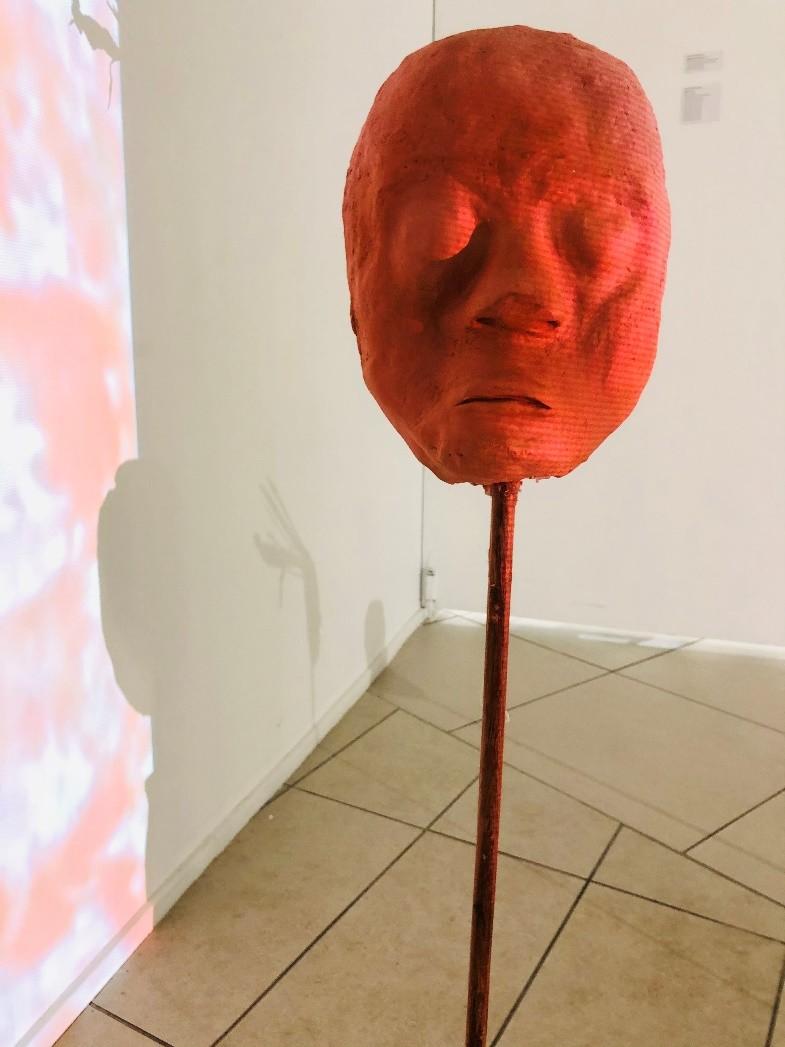
Patricia Mdlongwa, Mask 1 of 9.2022 Height 100cm
Patricia Mdlongwa, Mask 3 of 9 ,2022. height 93 cm

Patricia Mdlongwa, Mask 4 of 9 ,2022. Height 93cm
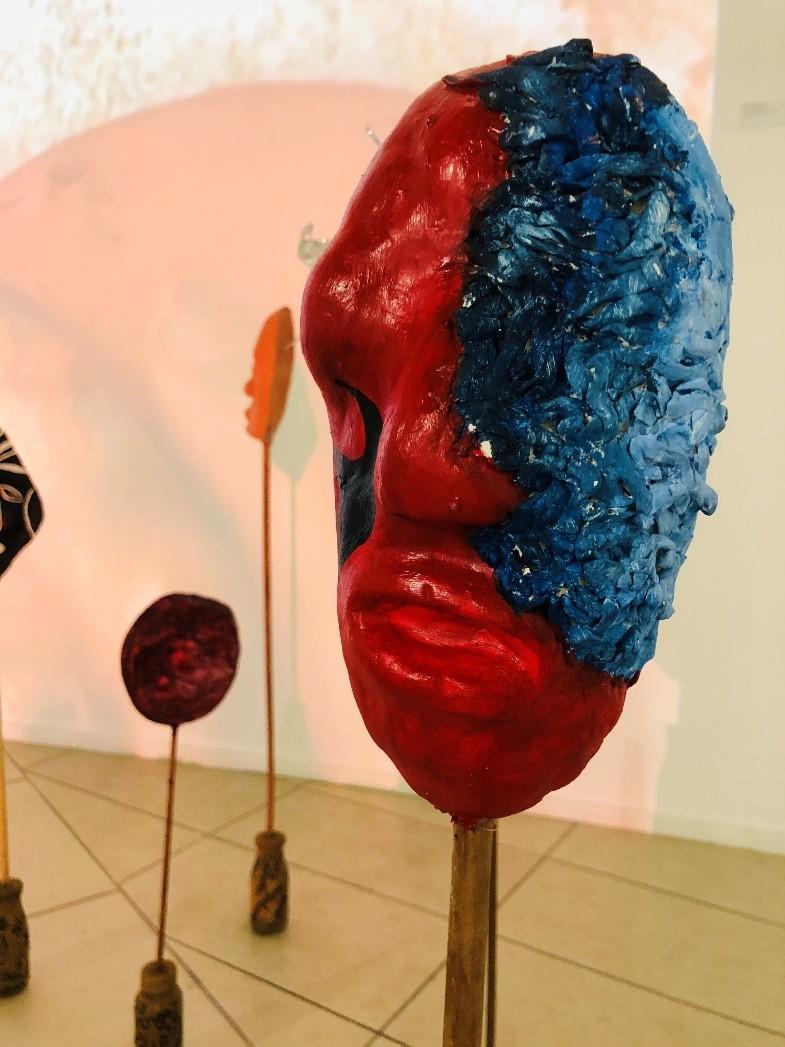
Patricia Mdlongwa, Mask 5 of 9 ,2022 Height 91cm
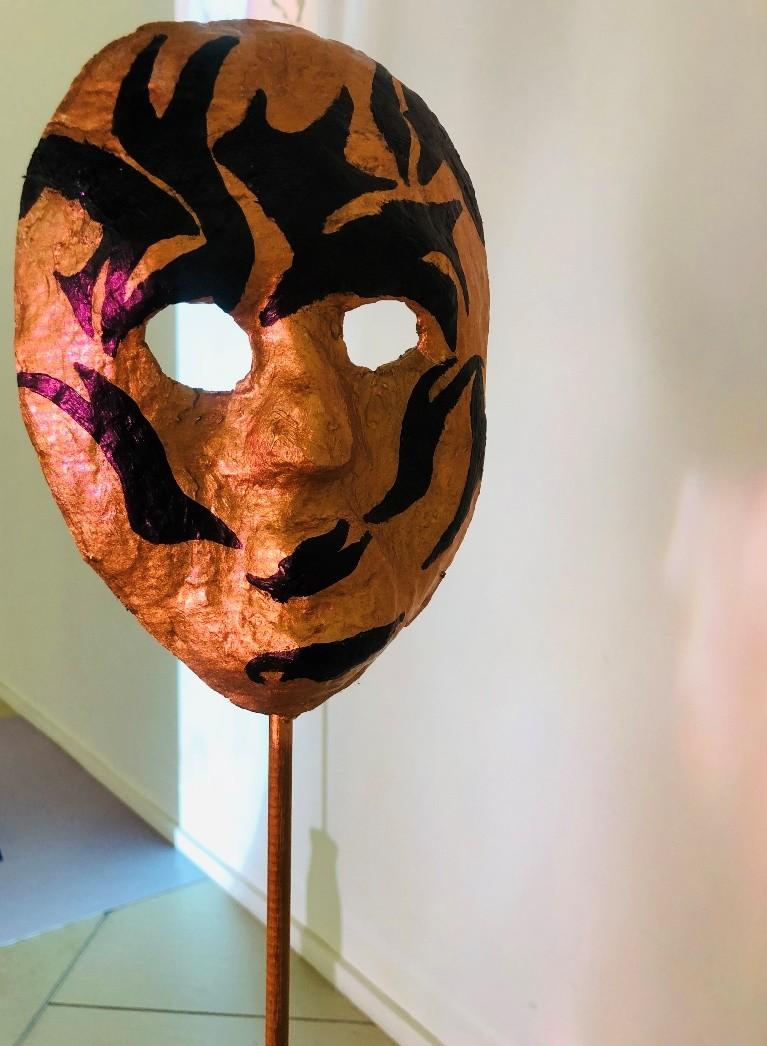
Patricia Mdlongwa,
Mask 7 of 9 , 2022. Height 69cm

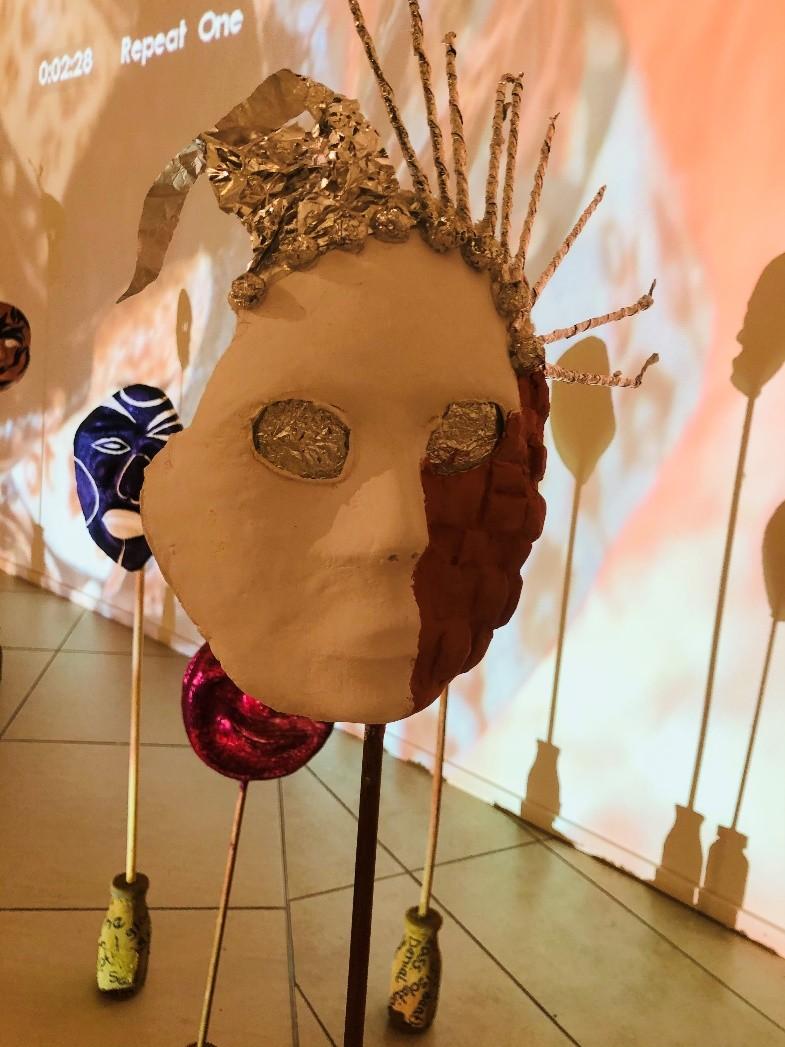
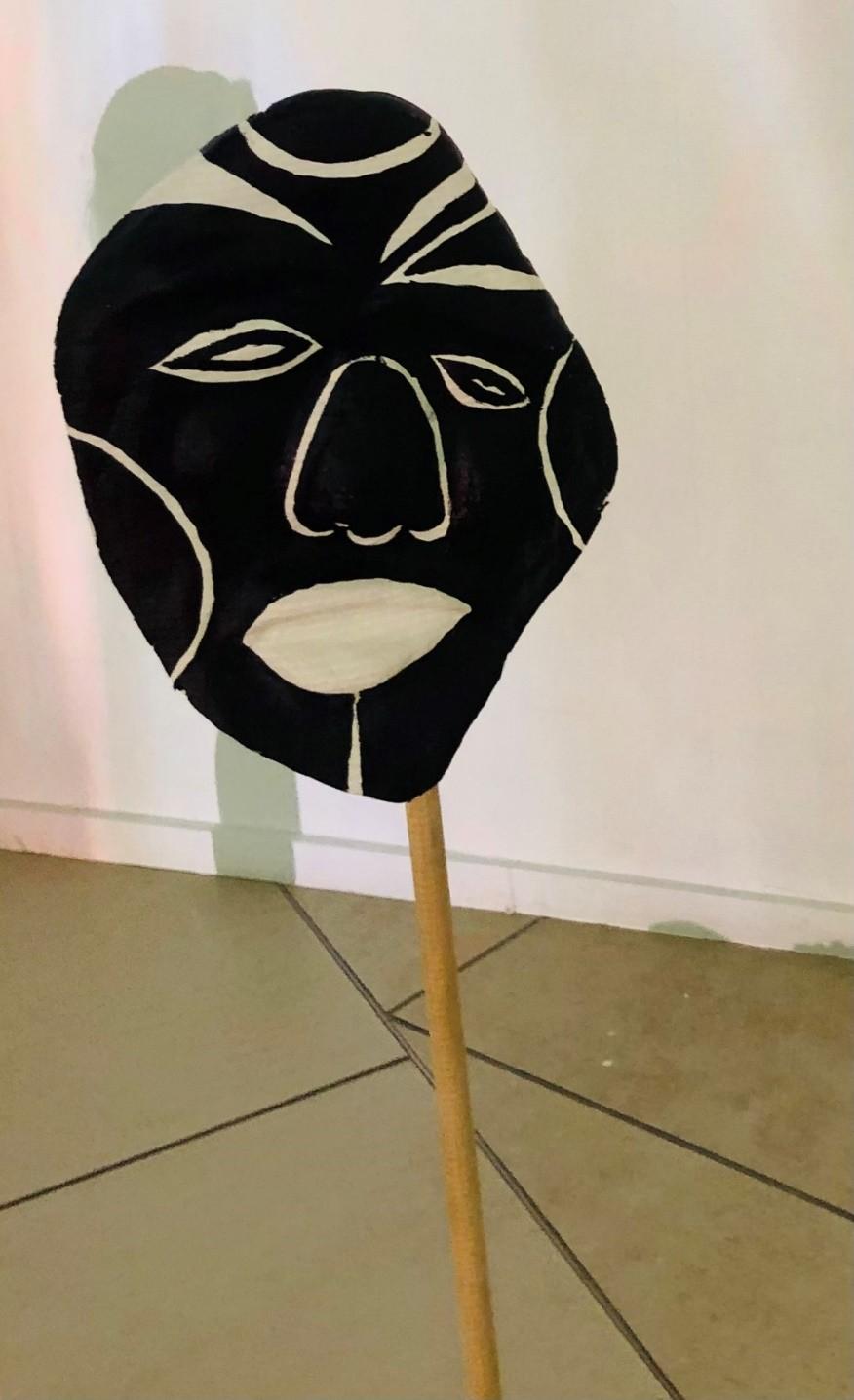
Patricia Mdlongwa, Mask 2 of 9,2022 Height 100cm
Patricia Mdlongwa, Mask 7 of 9,2022 Height 82cm
Patricia Mdlongwa, Clay Mask 8 of 9,2022

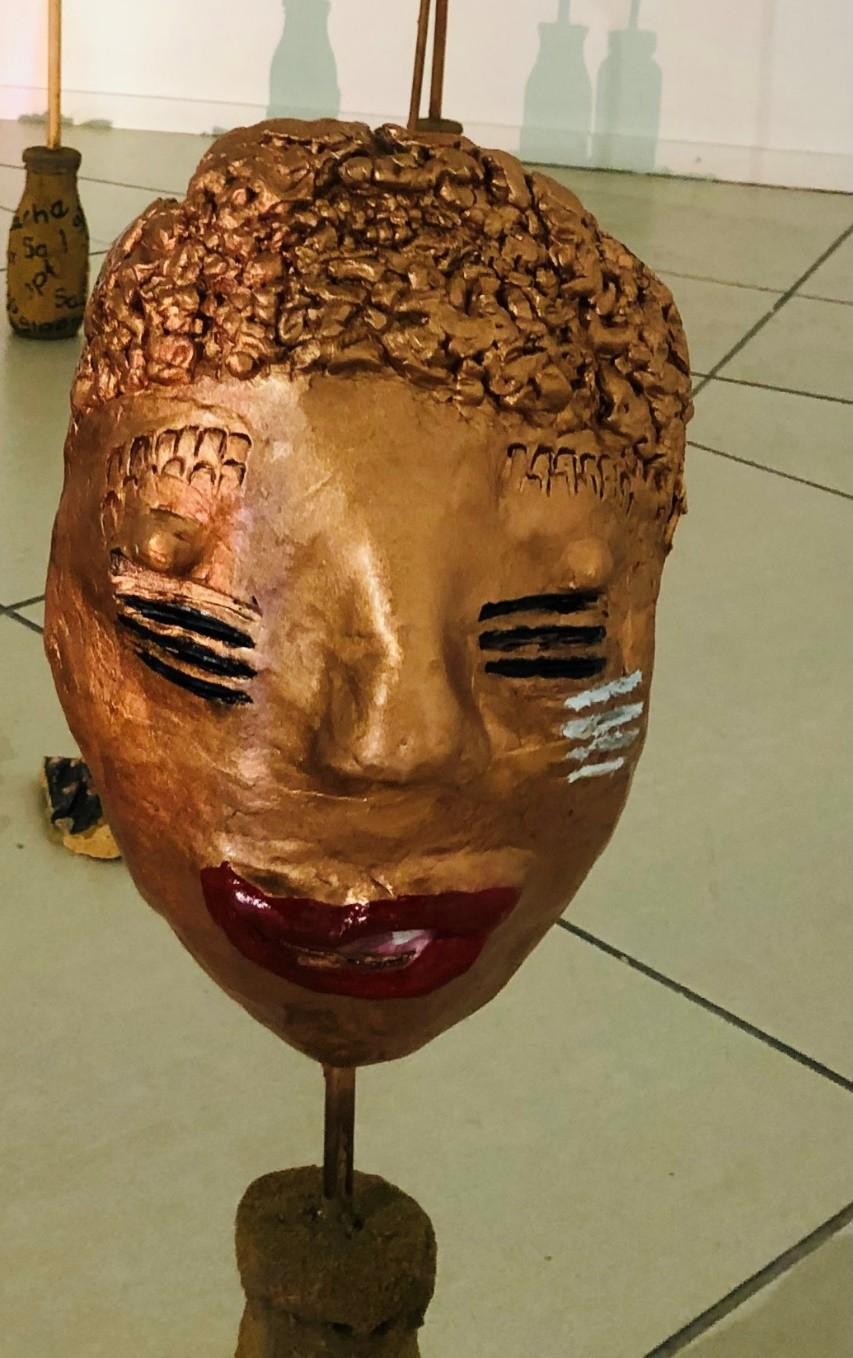
Height 60cm
Patricia Mdlongwa, Clay 9 of 9,2022. Height 53cm
Patricia Mdlongwa, Dress Sculpture,
2022.fabric weaving Height 170cm Width 83cm Depth 43cm

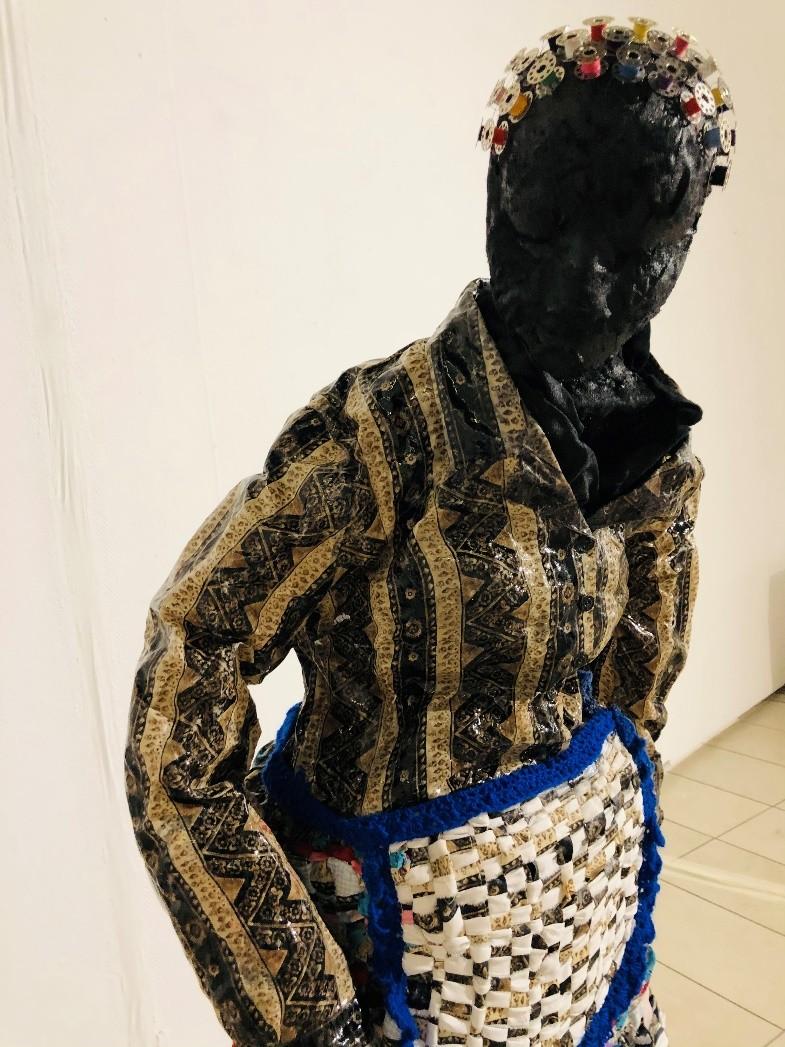
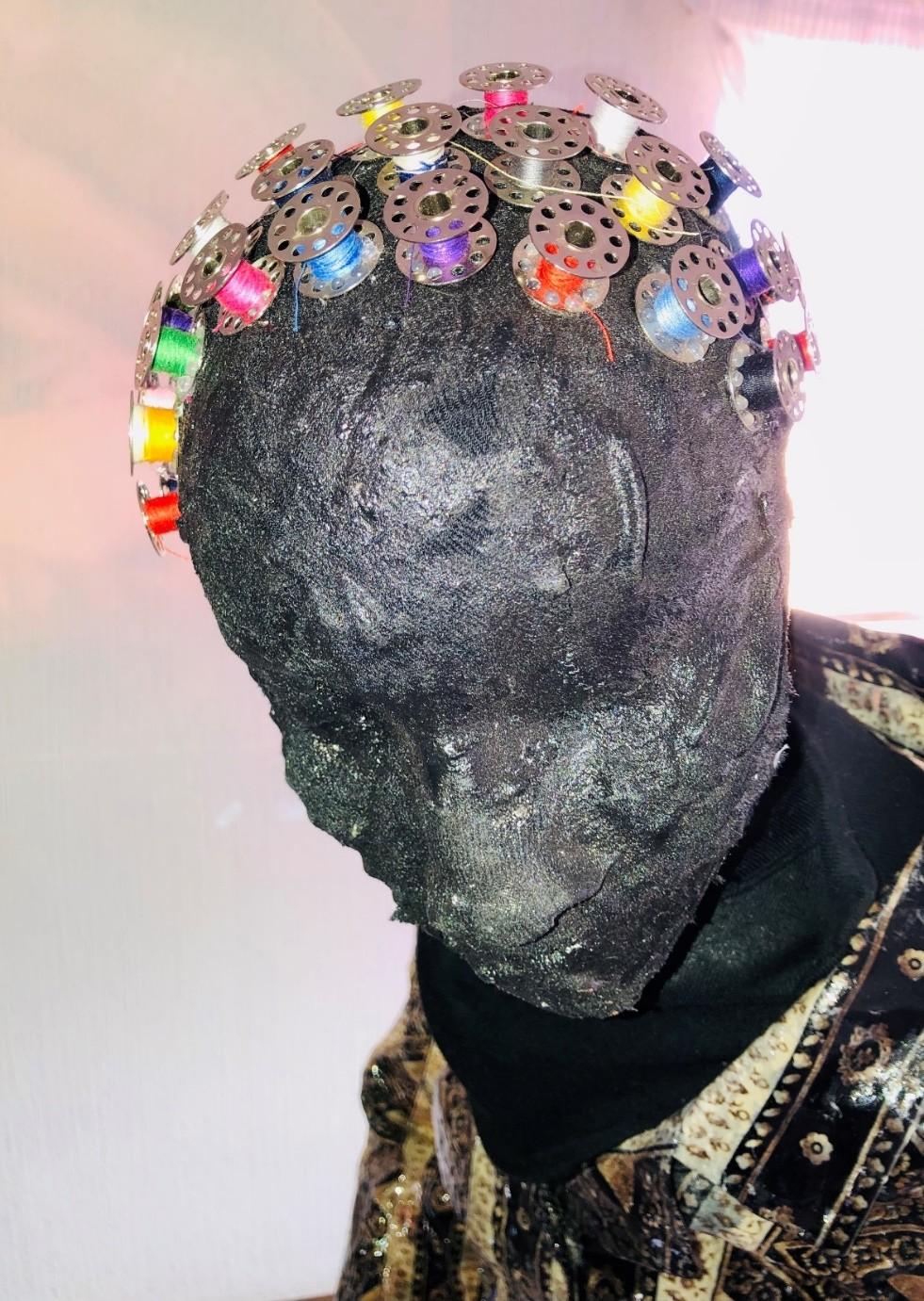


Light reflection effects on masks In front projected video performance
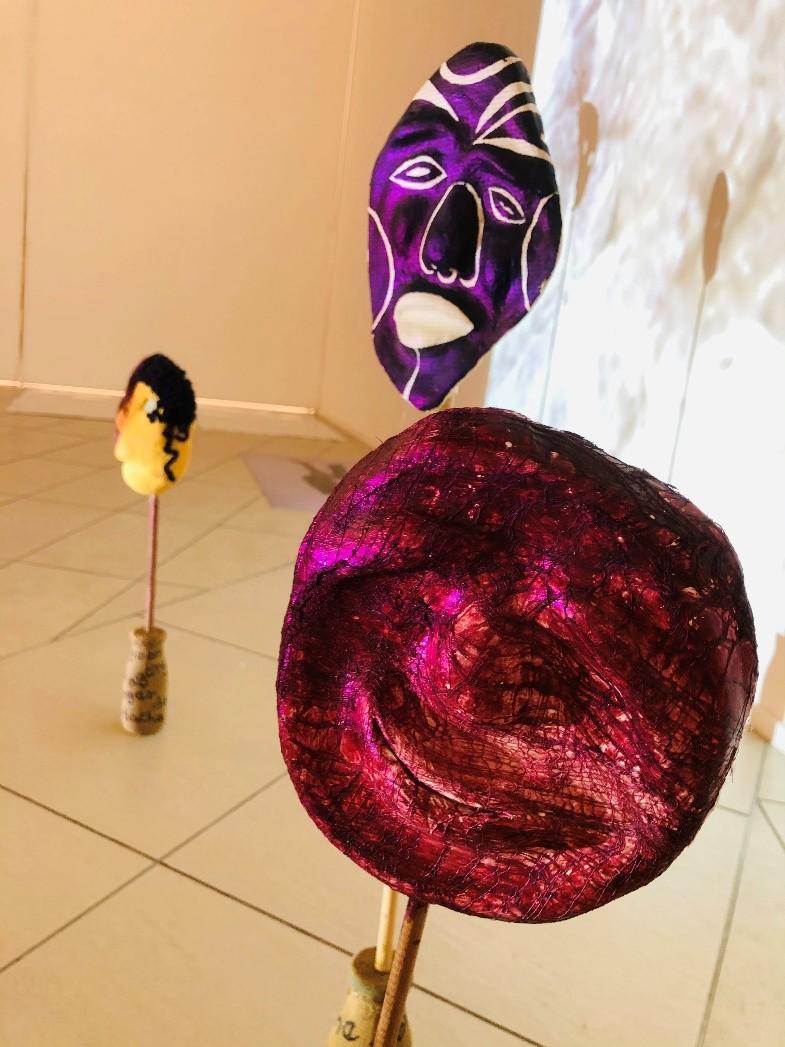
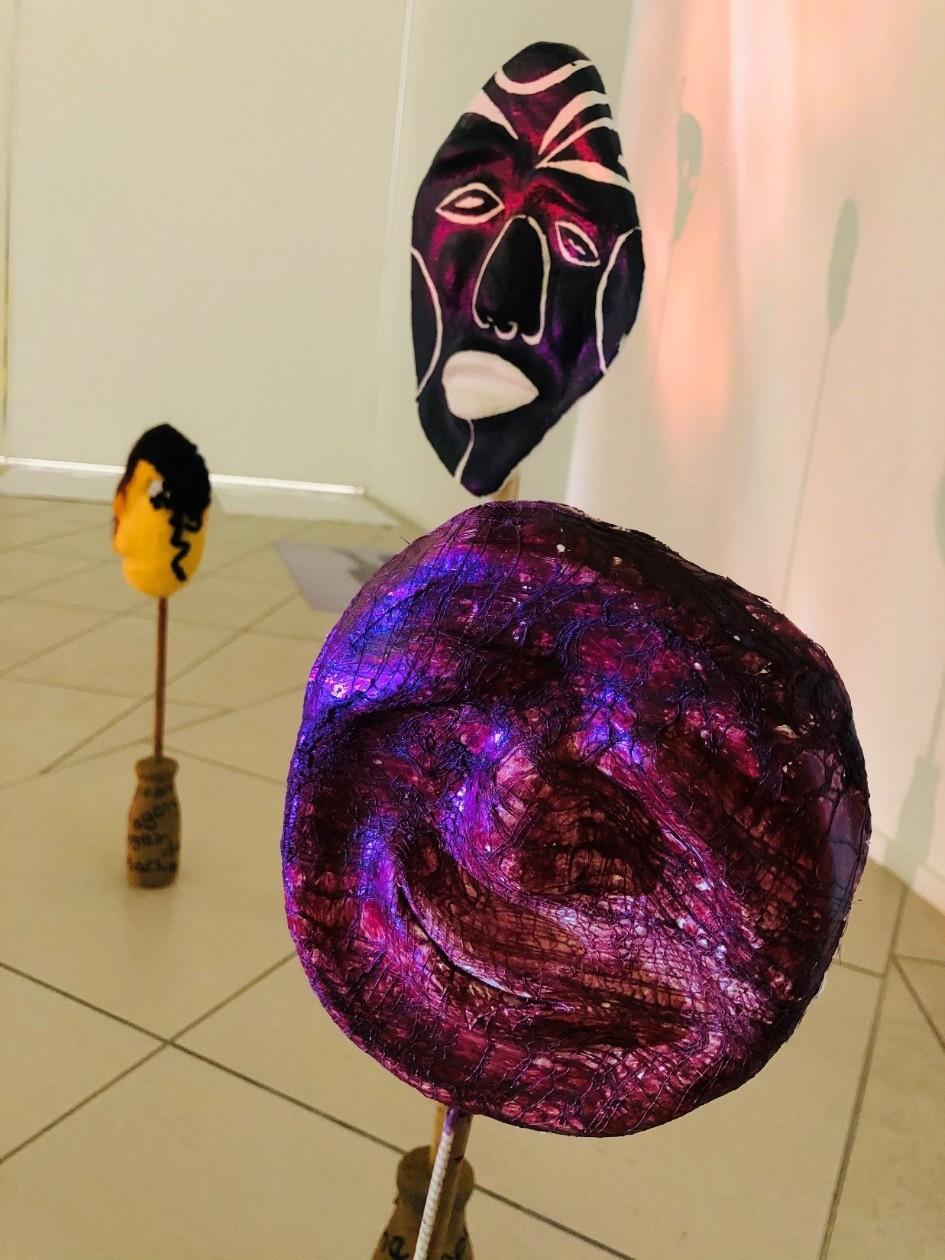

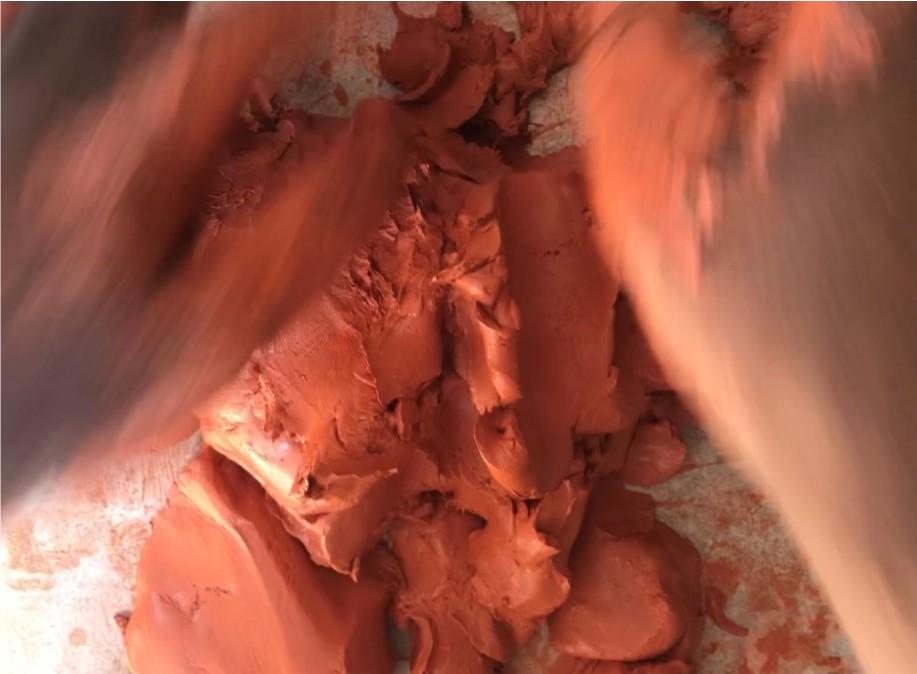
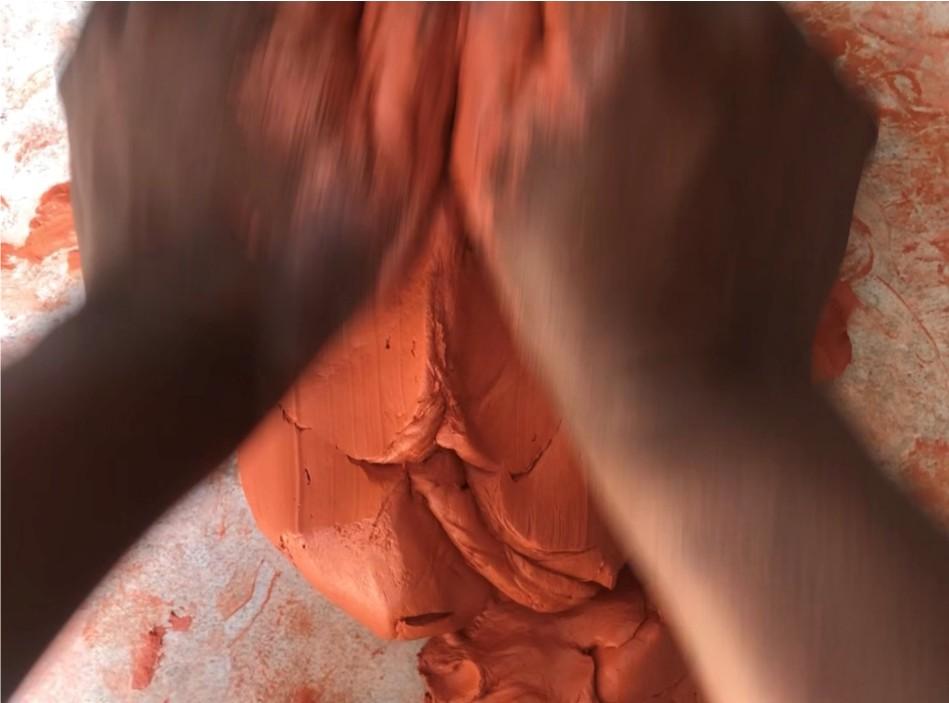
 Patricia Mdlongwa, Video Still images,2022. Projected on gallery wall
Patricia Mdlongwa, Video Still images,2022. Projected on gallery wall
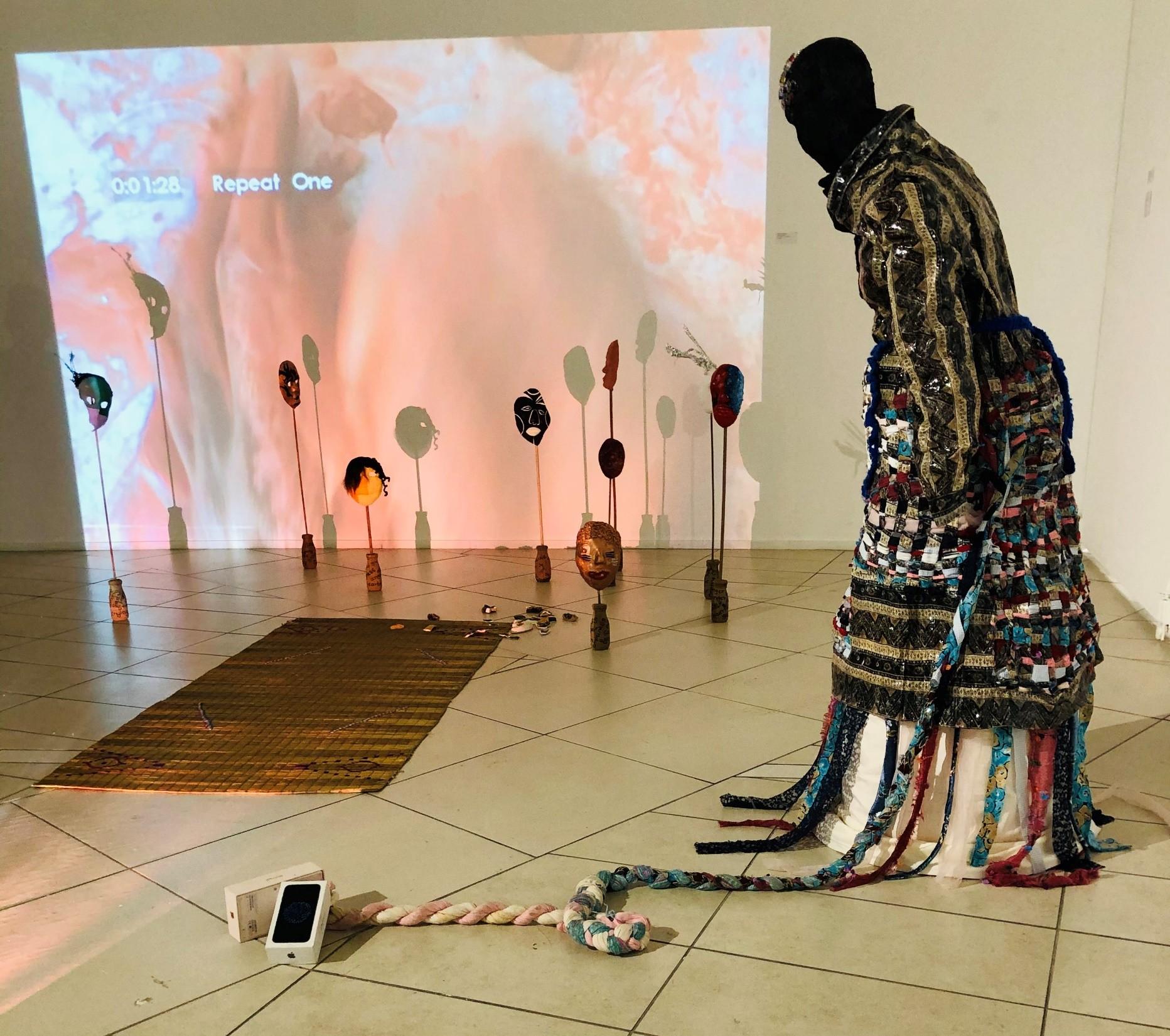
Patricia Mdlongwa,2022 Installation Video still Projected on Gallery wall
Patricia Mdlongwa, Icansi (traditional grass mat), 2022.weaving on natural grass. 58cm x 192cm
Patricia Mdlongwa, Broken Living Souls,2022. Area 60cm x 60 cm
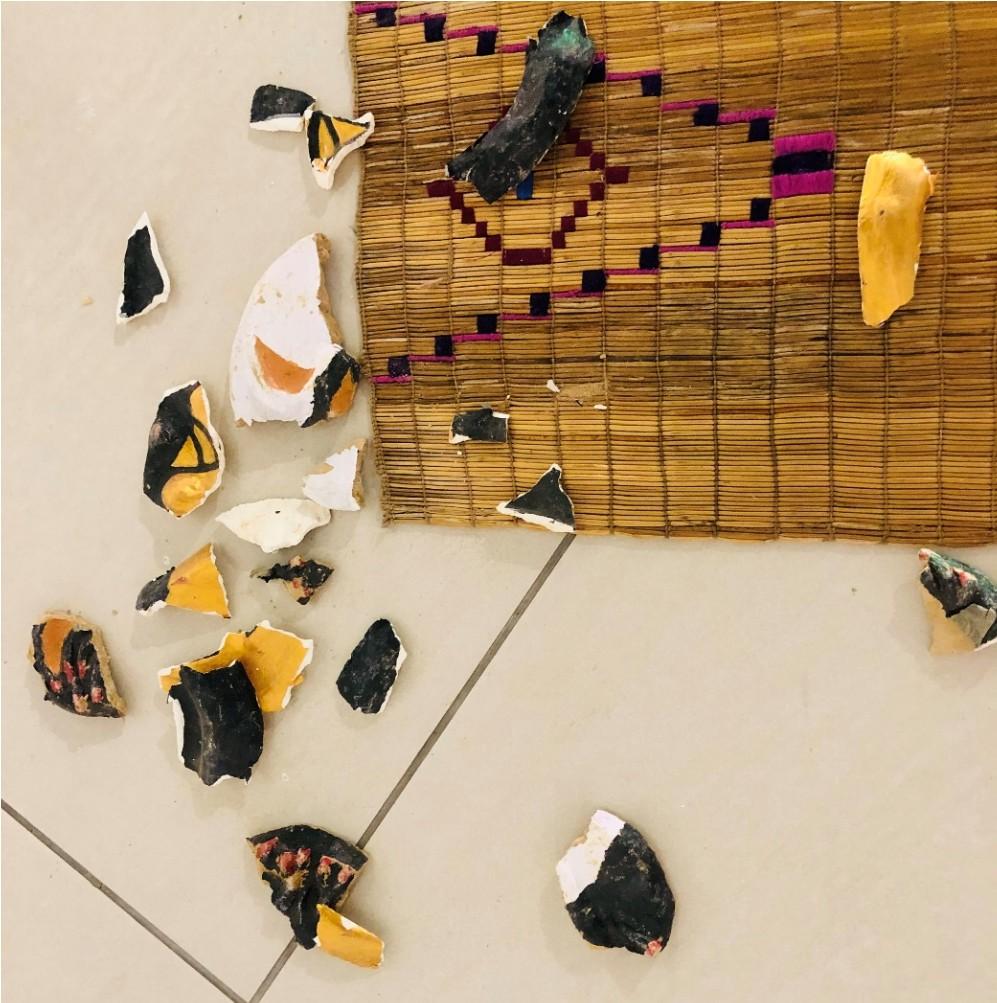
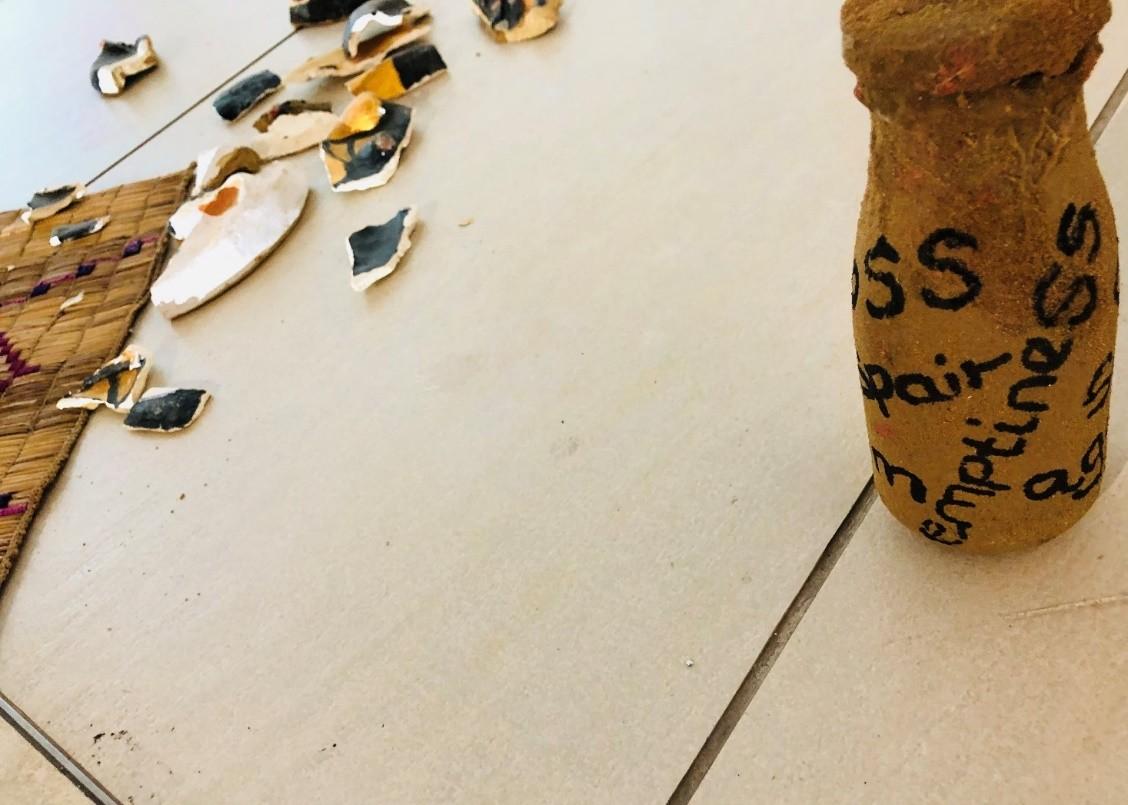
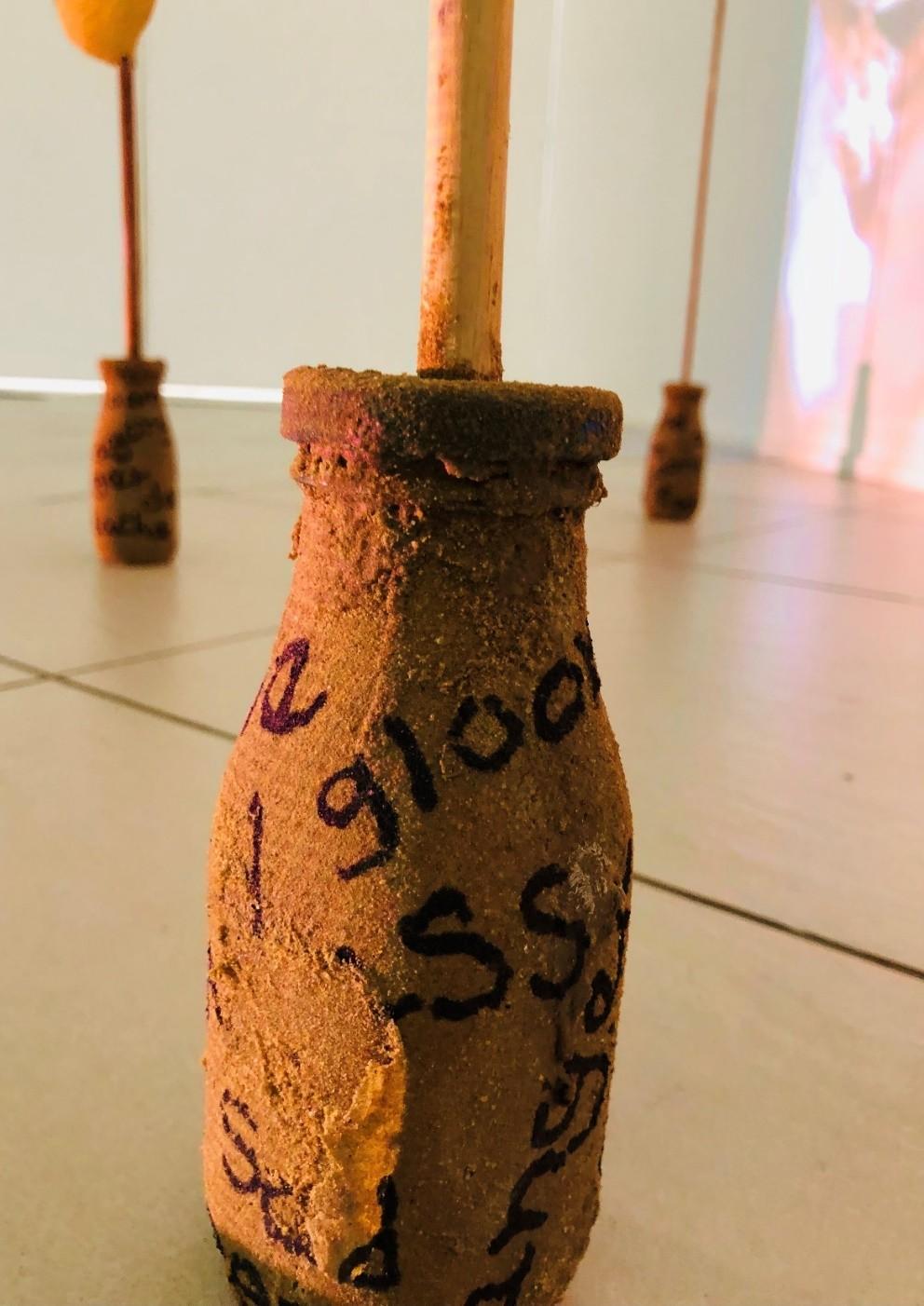
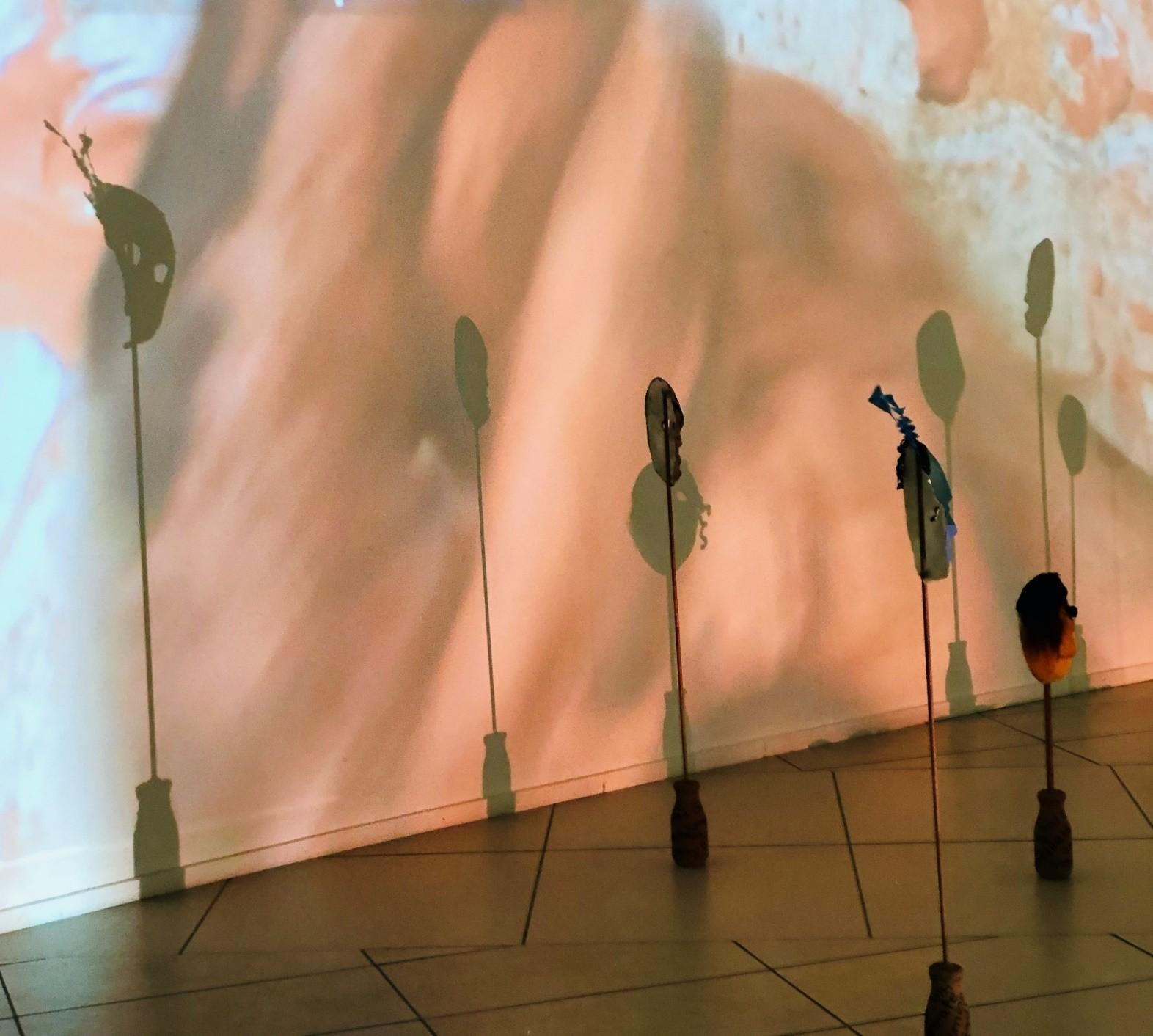
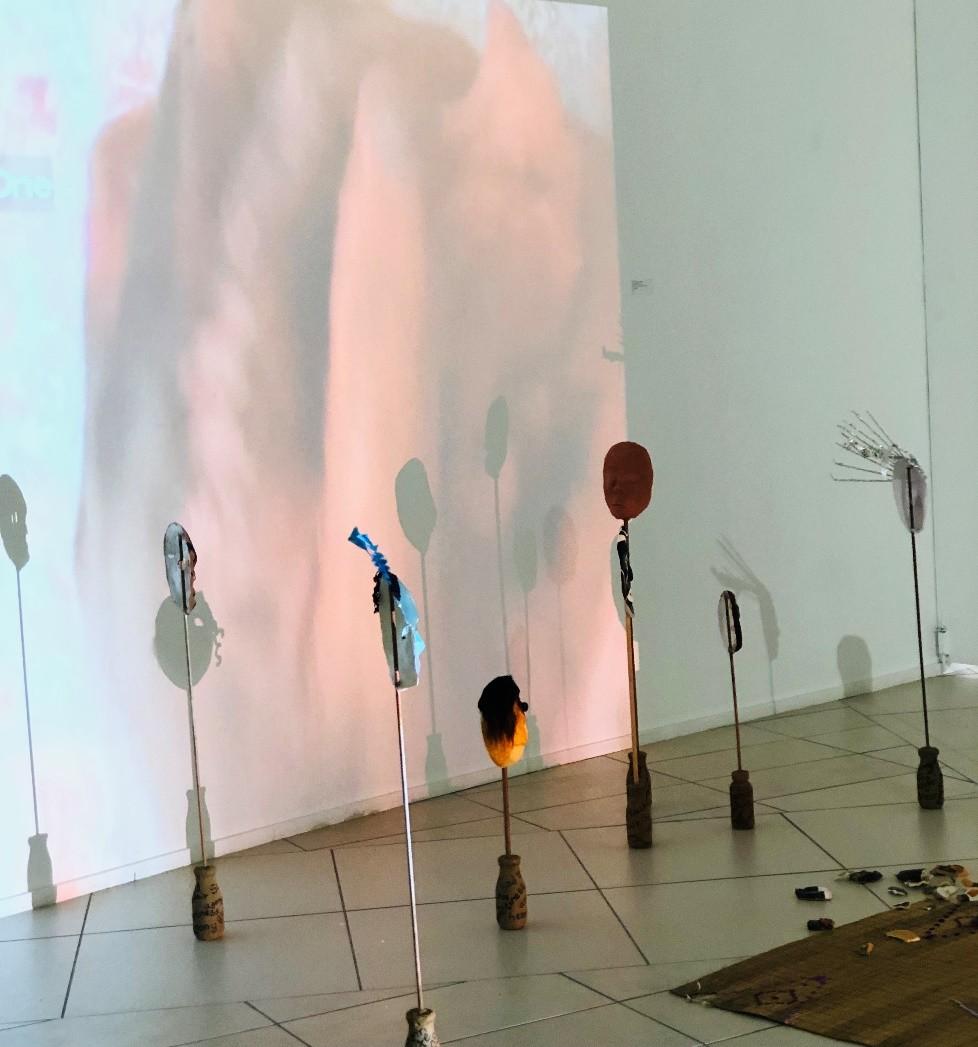

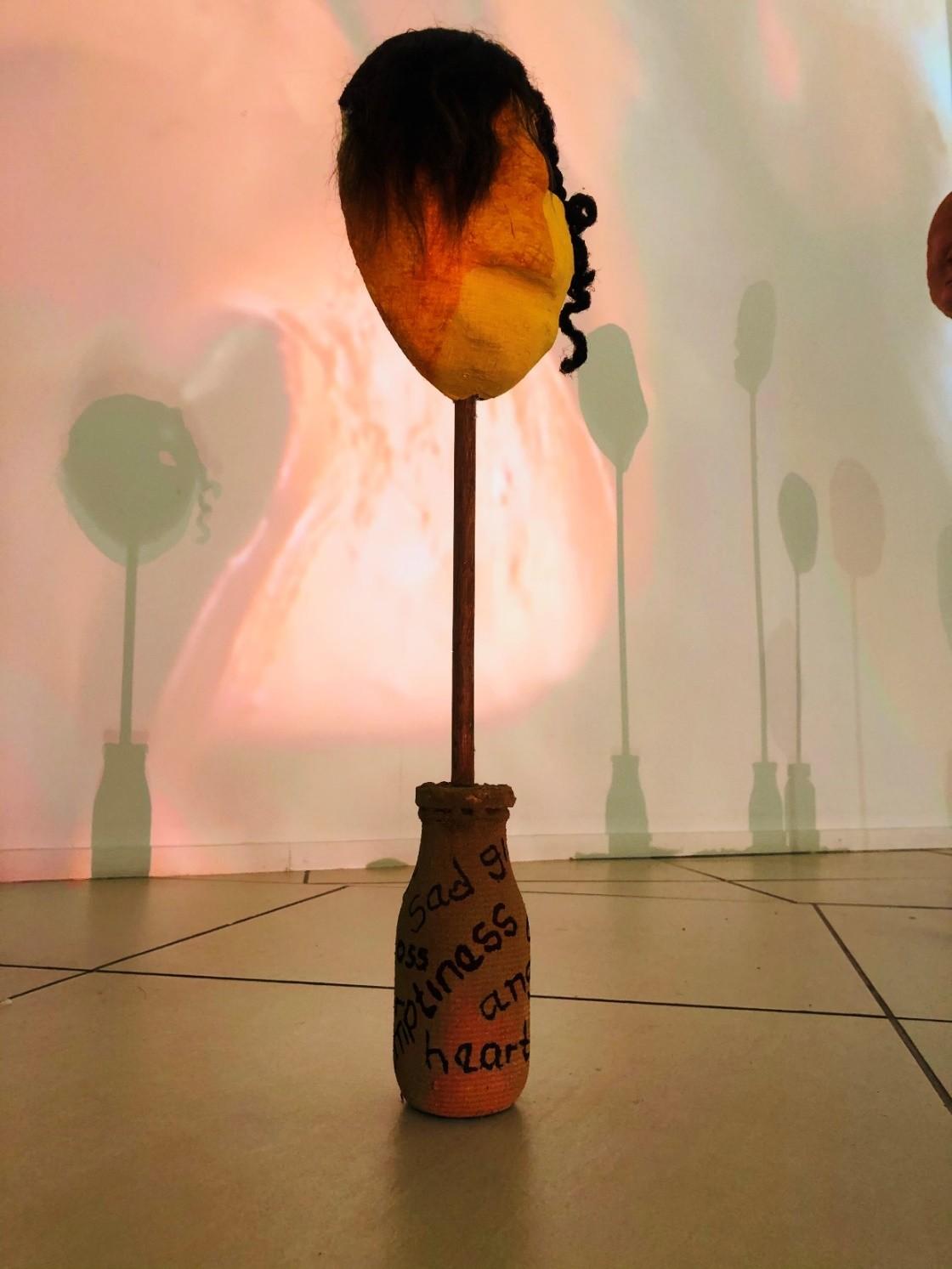
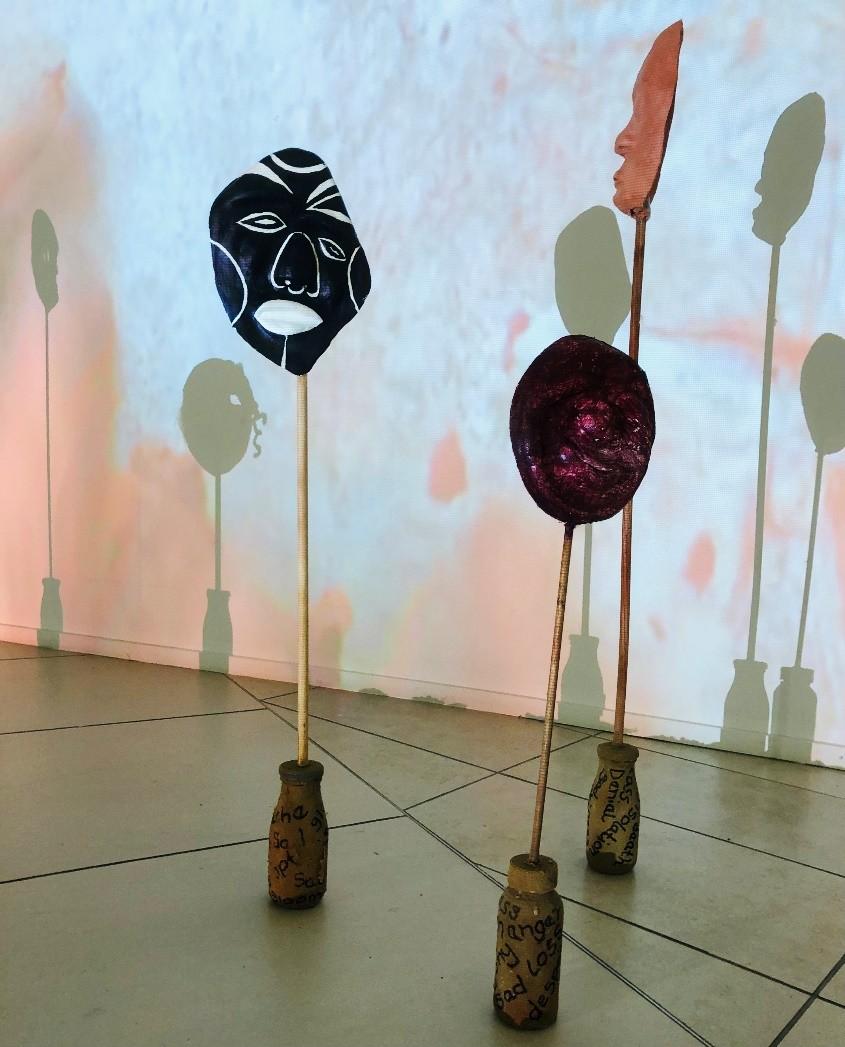
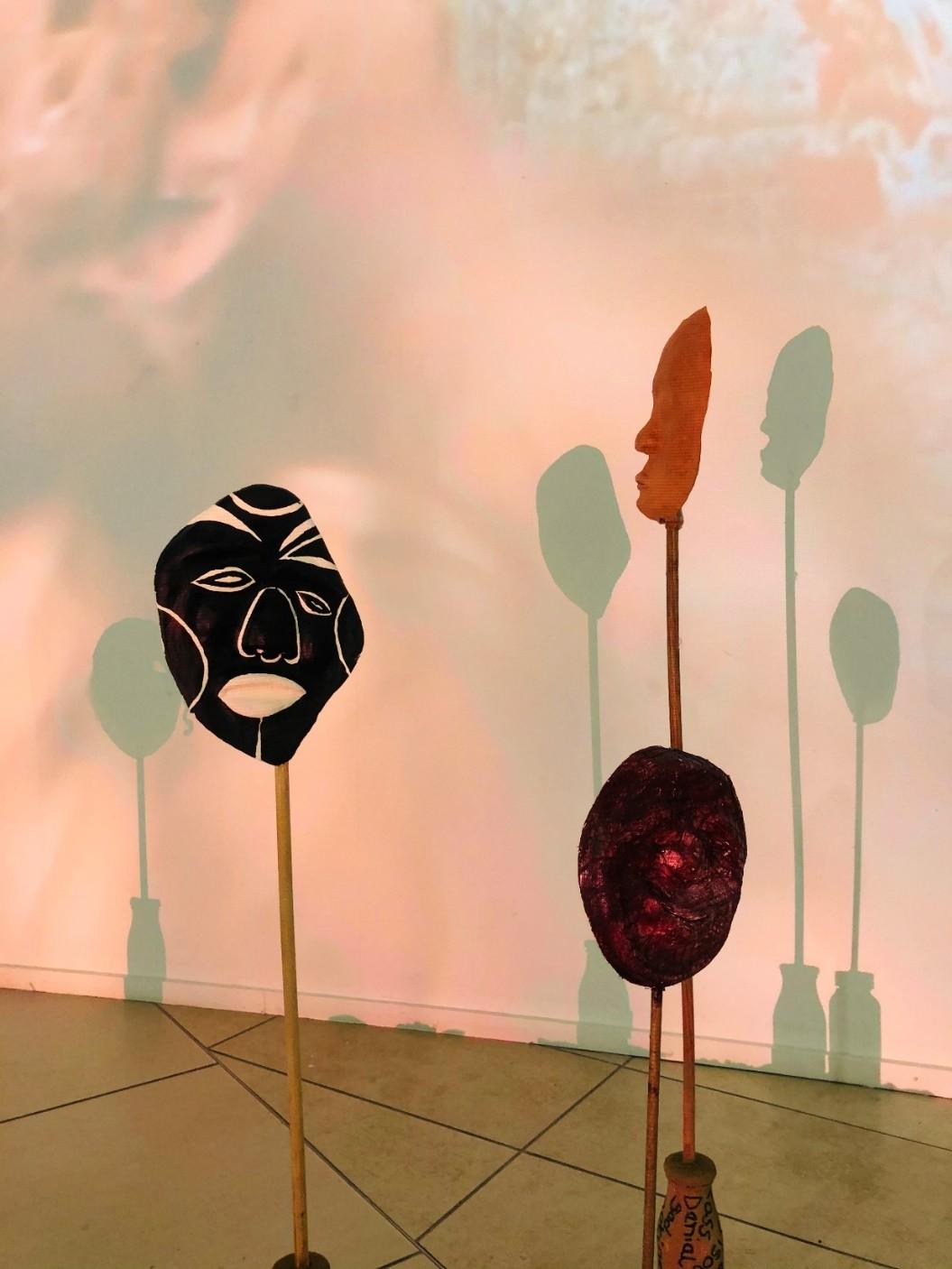


Patricia Mdlongwa,2022 Installation Video Clip Projected on Gallery wall
ACKNOWLEDGEMENTS
• I wish to thank my sons and dearest friends Magdeline Masala ,Skhangezile Dube ,Hammond Sibanda who constantly supported and believed in my vision and my dream. Without them this exhibition would not have been possible. To my guardian angels, thank you too.
•
•
•
•
•
A SPECIAL THANK YOU TO:
My lecturers for mentoring me
•
Dr Ania Krajewska
Mr Lawrence Lemaoana
Andrew Smith
Graphic Design & Layout
Mathias Vinyu-3rd Edge Creative
0730970068
• www.3rdedge.co.za|Tell:
LIST OF SOURCES
• Danto, A. C. Simon, J.2006.Sheila Hicks Weaving as Metaphor. Yale University Press.
• Brook S. L, Miraglia D.A. 2015.Using creative therapies to cope with grief. Thomas Publisher LTD. Illinois.
• Bowlby J.1961.Process of mourning. International journal of psychology
• Bowlby J.1981.Attachment and loss vol 3.1st ed. New York; Basic Books
• Freud S.1917/1957.Mourning and Melancholia. In J. Strachery (Ed), standard edition of the complete work of Sigmund Freud. London Hogarth Press
• Kubler-Ross.E.1969.On death and dying. New York: Springer
• Scarry E.1985.The Body in Pain-The making and Unmaking of the World. Oxford University Press
• https://303magazine.com/2021/07/gina-klawitter/
• https://www.gklawitter.com/ginain-the-news
• https://www.gklawitter.com/about
• https://www.moma.org/magazine/articles/210
• https://www.aipc.net.au/articles/theories-of-loss
•
•
PROFFESSIONAL EXPERIENCE
• NAM[JOB TITLE, COMPANY E]
• Grade 12 Visual Art teacher, Grades 8 &9 Creative Arts teacher, Dinwiddie High School
• [Dates from 2004 -to Date]
• COMPANY NAME]
• ‘Acting HOD Art ‘ O’ & ‘A’ Level Art Teacher, Orion Private College
• COMPANY NAME]
• Teacher/HOD, Magwegwe Secondary School
• Job responsibilities: Teaching Cambridge “O” Level Art and English.
• COMPANY NAME]
• Teacher/ Acting HOD(English)
• Tsheli Secondary School
EDUCATION
• UNISA-BVA Studies (Third Level)
• Hillside Teachers’ College- -Diploma in Education
• LEADERSHIP
• 1. Art and Design (First major)
• 2. English (second major) Lead Teacher in Creative Arts: GDE (Ekurhuleni District)- Facilitator on the implementation of the new CAPS Curriculum
• Mentoring of Creative Art student teachers
CV
GROUP EXHIBITIONS
• 2019 : Thami Mnyele Fine Art Awards
• Listed as one of The Top 100 Final Artists:
• Title : JOURNEY OF A SINGLE MOTHER
• Media : Installation ,clay
• 2020 : Third Level Examination Exhibition for the
• Degree BVA
• Title : RECLAIMING DARK SKIN
• UNISA Pretoria Main Art Gallery
• 2021 : Thami Mnyele Fine Arts Awards
• Nominated Top 20 Finalist
• Title : RECLAIMING DARK SKIN
• 2022 : 4TH Year BVA Exhibition
• Title : ART TO GRIEVE
• UNISA Pretoria Main Art Gallery

Patricia Mdlongwa mdlongwapatz@gmail.co m mobile:+27603138135
































 Patricia Mdlongwa, Video Still images,2022. Projected on gallery wall
Patricia Mdlongwa, Video Still images,2022. Projected on gallery wall













